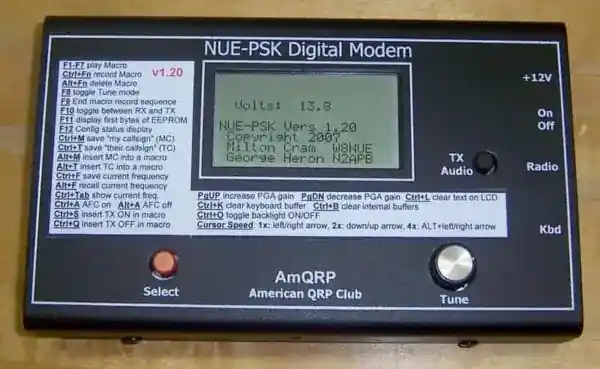In a world where data moves at the speed of light, understanding the hardware that makes this possible is crucial. One such essential hardware component is a Digital Modem. But what is it, how does it differ from its analog counterpart? This guide aims to answer all these questions and more.
In this article:
- What is a Digital Modem?
- How Digital Modems Work
- Types of Digital Modems
- Advantages and Limitations
- Digital Modem vs. Analog Modem
- Applications of Digital Modems
- Conclusion
- Further Reading
What is a Digital Modem?
A Digital Modem is a hardware device that facilitates the synchronous transmission of data over digital lines, such as ISDN or T1 lines. Unlike analog modems, which modulate and demodulate analog signals, digital modems focus on framing data for transmission over digital circuits. They use advanced digital modulation techniques to prepare data for its journey from one point to another.
Digital Modem is any type of modem used for synchronous transmission of data over circuit-switched digital lines.

One example of a digital modem is an ISDN terminal adapter. Digital modems are not used for changing analog signals into digital signals because they operate on end-to-end digital services.
Instead, they use advanced digital modulation techniques for changing data frames from a network into a format suitable for transmission over a digital line such as an Integrated Services Digital Network (ISDN) line. They are basically data framing devices, rather than signal modulators.
Modern Relevance
While the traditional standalone digital modem may have become less ubiquitous, the core technology is very much alive and has adapted to modern networking requirements. In today’s homes and offices, your network router likely contains a digital modem as an integrated component. This modem serves as the gateway that connects you to your Internet Service Provider (ISP), facilitating high-speed, reliable internet access. Essentially, the digital modem technology inside these devices continues to be a cornerstone of our connected world.
How Digital Modems Work
Digital modems operate by converting data frames from a network into a format suitable for digital line transmission. They encapsulate data packets using framing protocols and add error-checking codes to ensure the integrity of the transmitted data. Because they operate in a purely digital environment, they can offer faster and more reliable transmission rates than analog modems.
Types of Digital Modems
- ISDN Terminal Adapters: These are specific to Integrated Services Digital Network (ISDN) lines and are essentially ISDN digital modems.
- DSL Modems: Used for Digital Subscriber Line services, these modems offer high-speed internet over telephone lines.
- Cable Modems: While generally considered analog, some cable modems operate on digital lines, offering faster and more reliable services.
- T1 and T3 Modems: These are used for T-carrier lines, which are high-speed, high-capacity digital lines.
Advantages and Limitations
Advantages
- Speed: Digital modems can achieve higher data rates compared to analog modems.
- Reliability: Less susceptible to noise and interference.
- Security: Enhanced encryption capabilities.
Limitations
- Cost: Generally more expensive than analog modems.
- Compatibility: May not be compatible with analog systems.
Digital Modem vs. Analog Modem
While analog modems are designed for asynchronous transmission over analog lines, digital modems focus on synchronous transmission over digital lines.
The key difference lies in the type of lines they operate on, the speed, and the modulation techniques used. Digital modems are generally faster but might be limited by compatibility and cost.
Applications of Digital Modems
Broadband Internet Access
First and foremost, digital modems serve as the backbone of broadband Internet access in homes and businesses. Whether you’re streaming high-definition videos, participating in video conferencing, or engaging in online gaming, it’s the digital modem that makes this all possible by providing high-speed, reliable connectivity.
Digital Telephony
Transitioning to the next application, digital modems play an integral role in digital telephony. Specifically, Voice over Internet Protocol (VoIP) services rely on digital modems to convert voice signals into data packets for transmission over the Internet, ensuring clearer and more reliable voice communications.
Secure Corporate Networks
Moving on, digital modems are also pivotal in establishing secure corporate networks. Companies use digital modems to facilitate Virtual Private Network (VPN) connections, thereby encrypting data and securing it from unauthorized access. In this way, digital modems serve as a critical layer of security in business operations.
Industrial Automation
Lastly, digital modems find applications in industrial settings where machine-to-machine communication is essential. They enable real-time data collection and monitoring, thereby optimizing operational efficiency.
Conclusion
To sum up, digital modems are not just pieces of hardware sitting idly in your networking cabinet; they are the workhorses of modern digital communication. From powering your binge-watching sessions to ensuring that your business conference runs without a hitch, digital modems are indispensable.
Moreover, their role extends beyond conventional Internet usage. They are actively shaping the landscape of digital telephony, fortifying the security of corporate networks, and even driving innovations in industrial automation. As we venture further into the digital age, understanding the capabilities and applications of digital modems becomes not just beneficial but essential.
Therefore, whether you’re a casual Internet user, a business professional, or someone interested in the intricacies of data transmission, appreciating the power and versatility of digital modems can give you a clearer insight into the digital world that envelops us.
